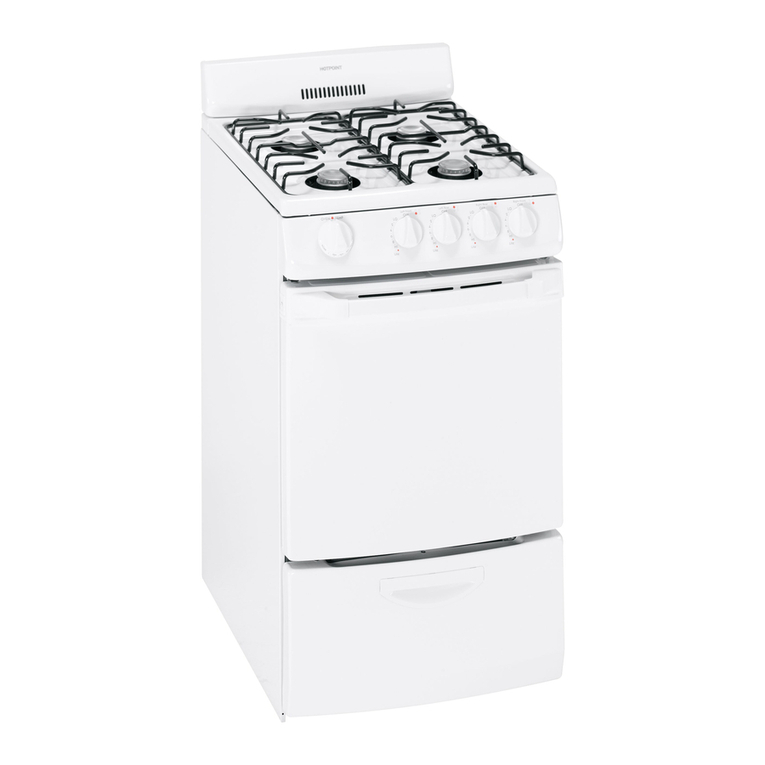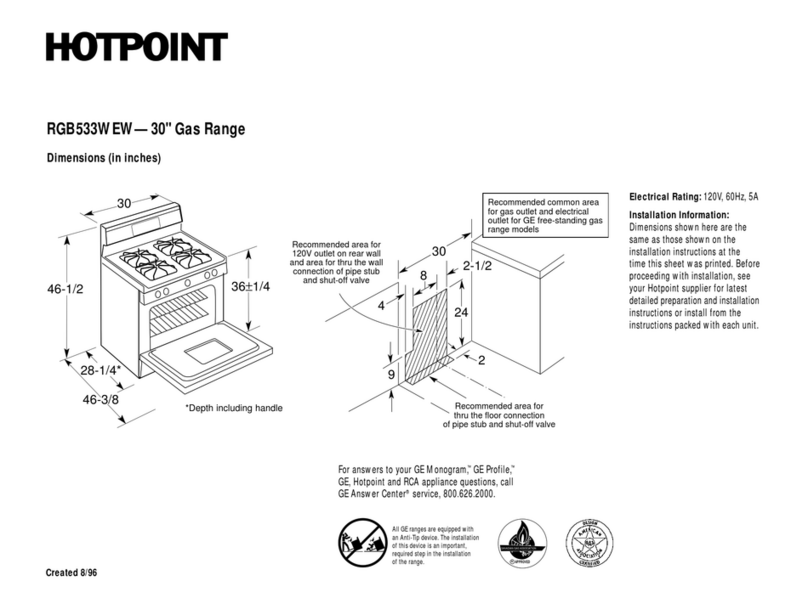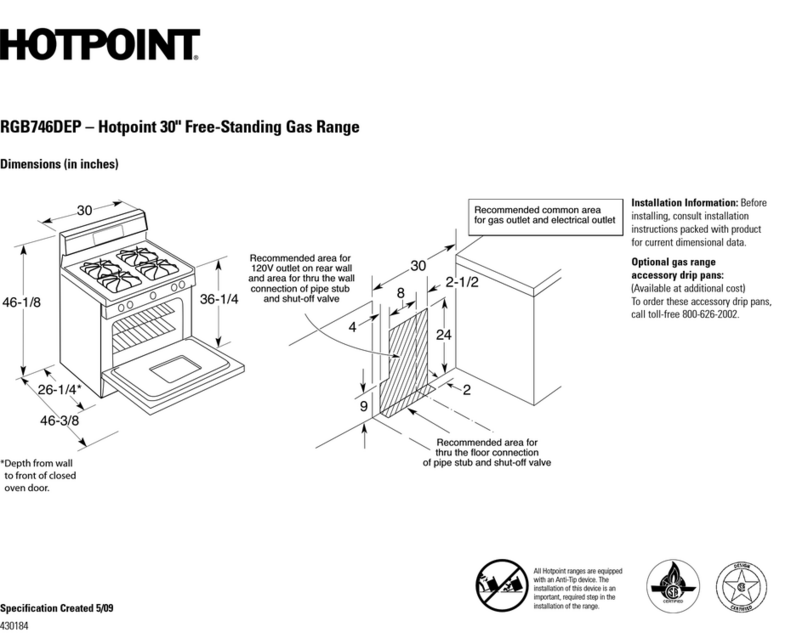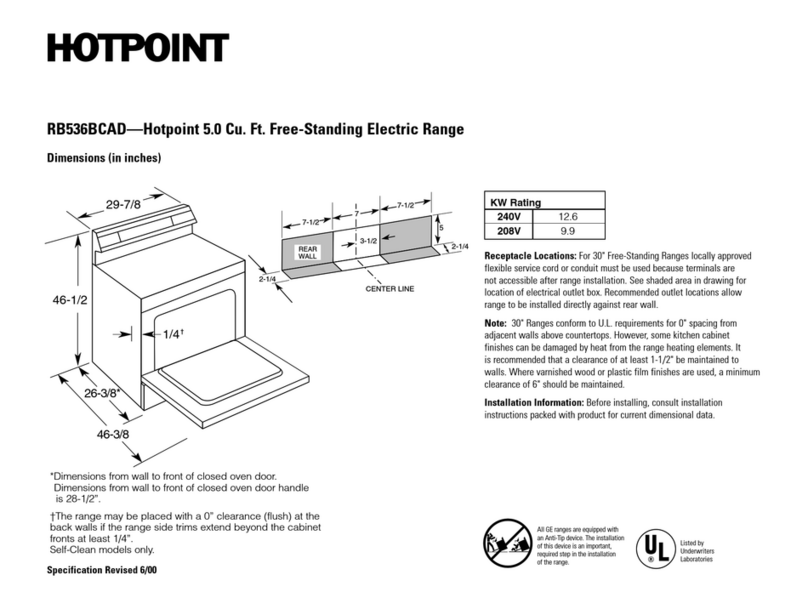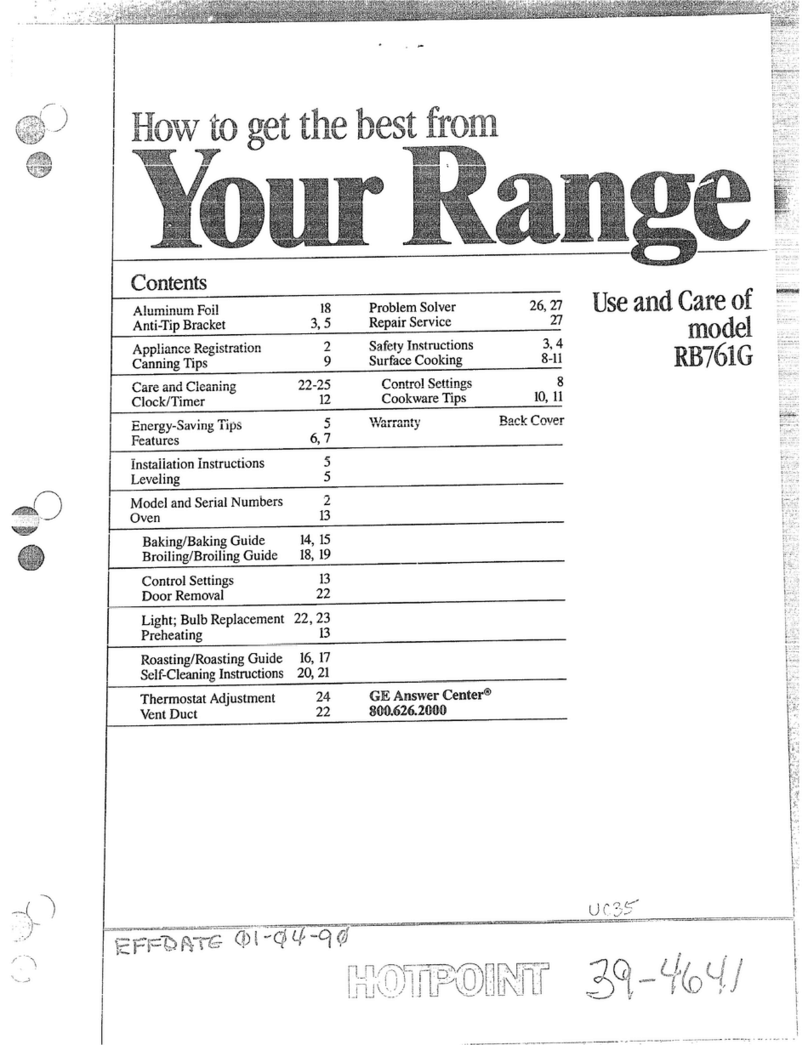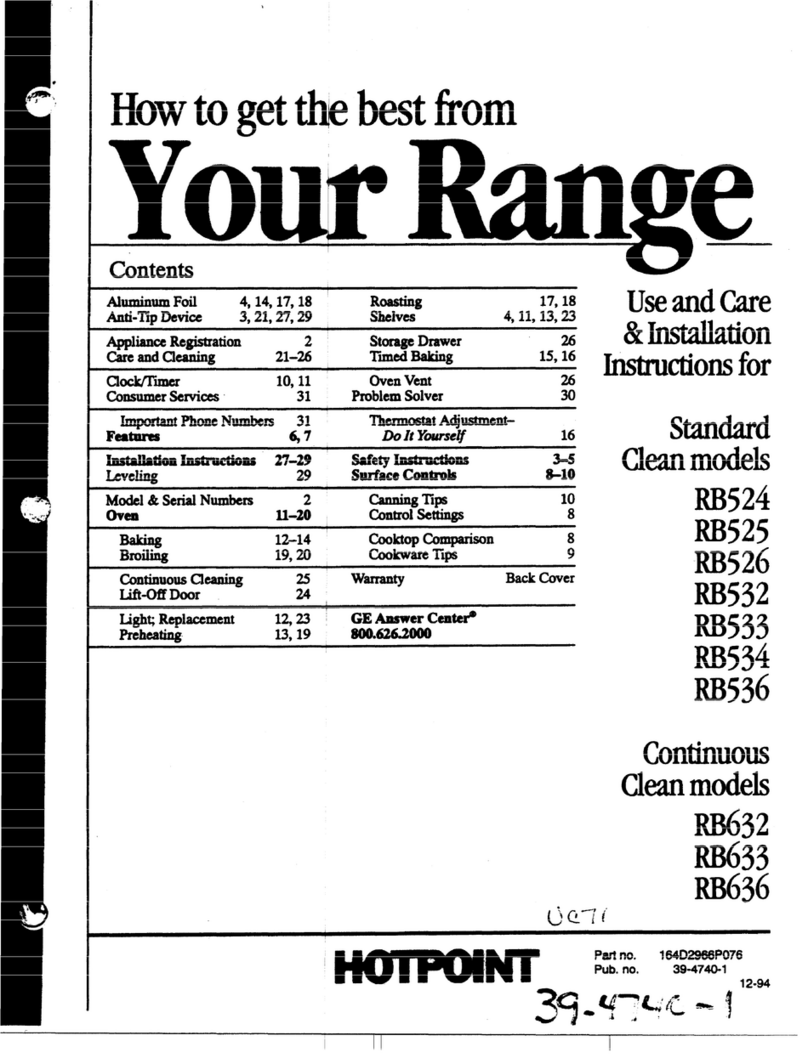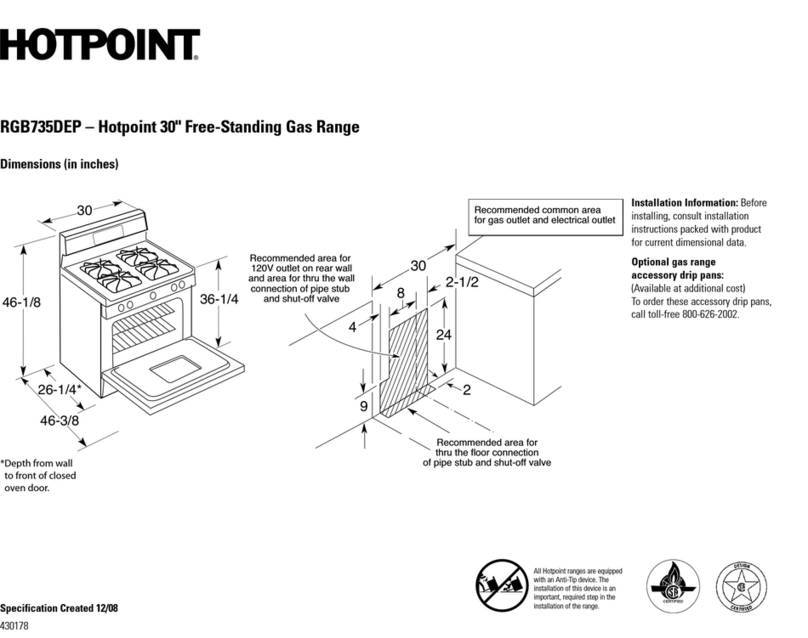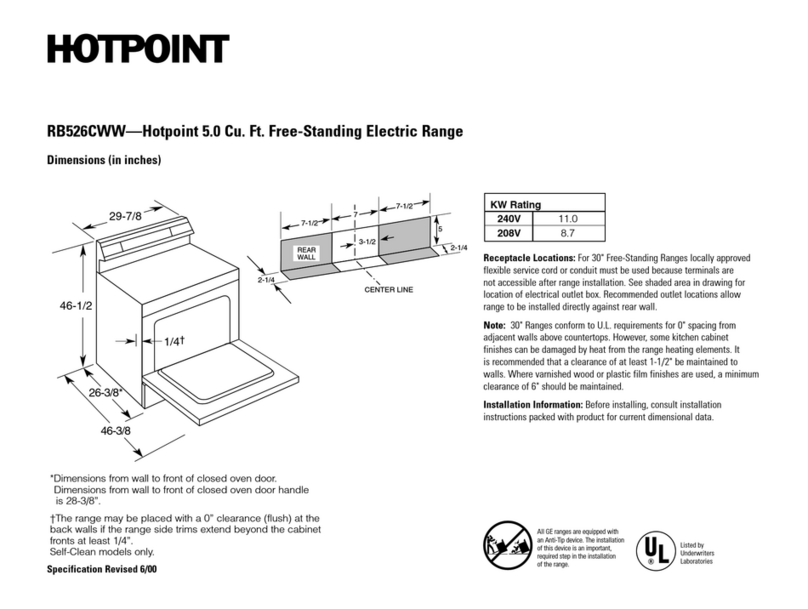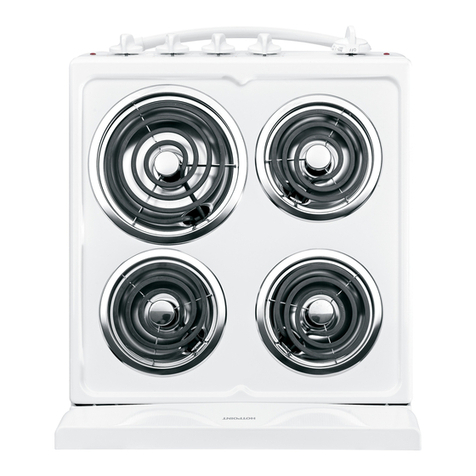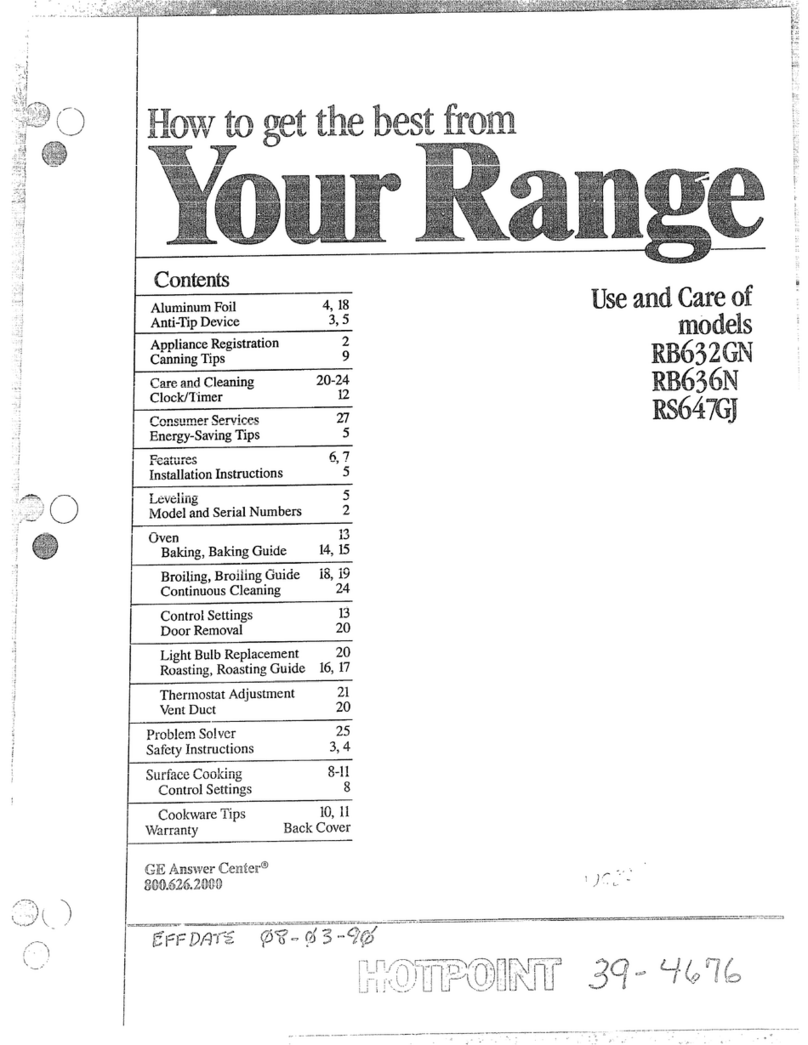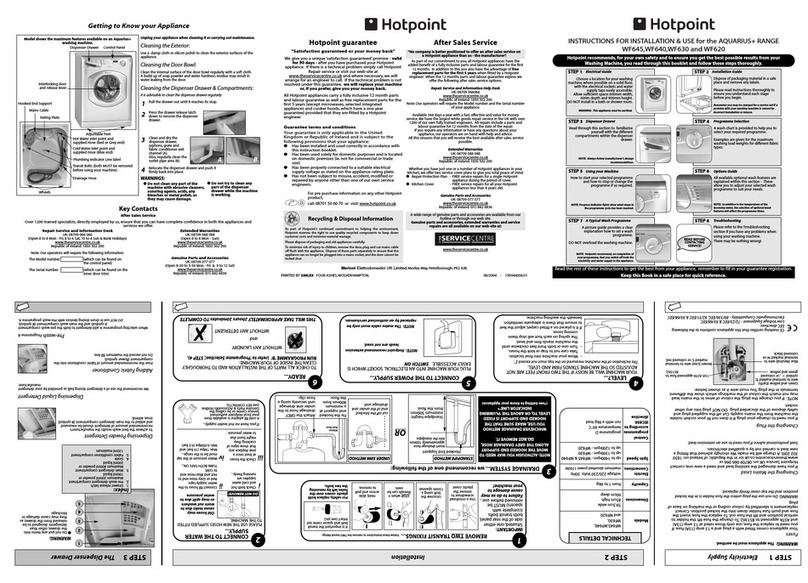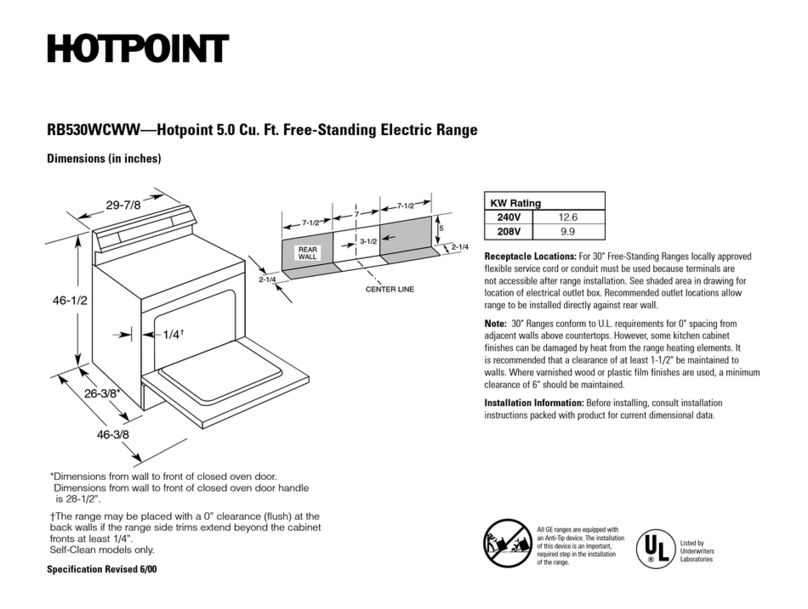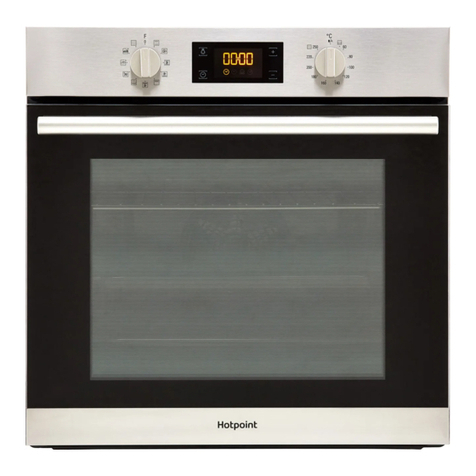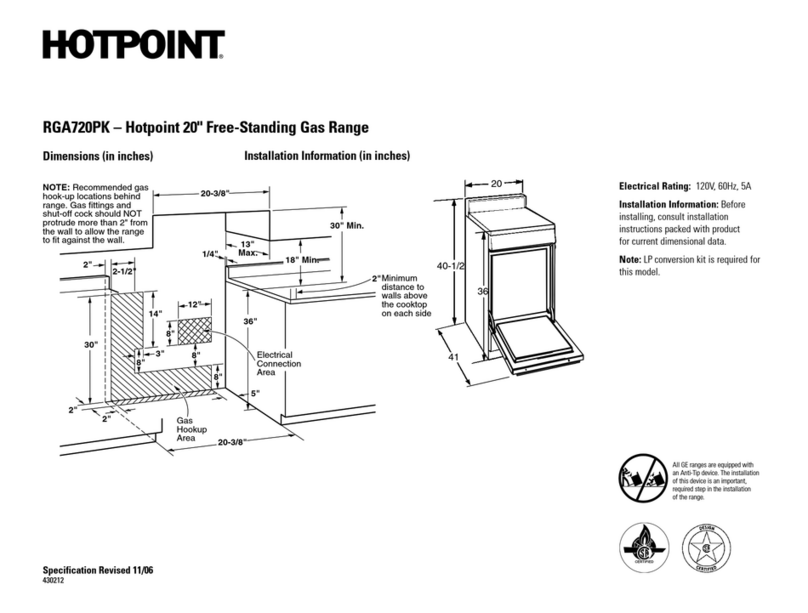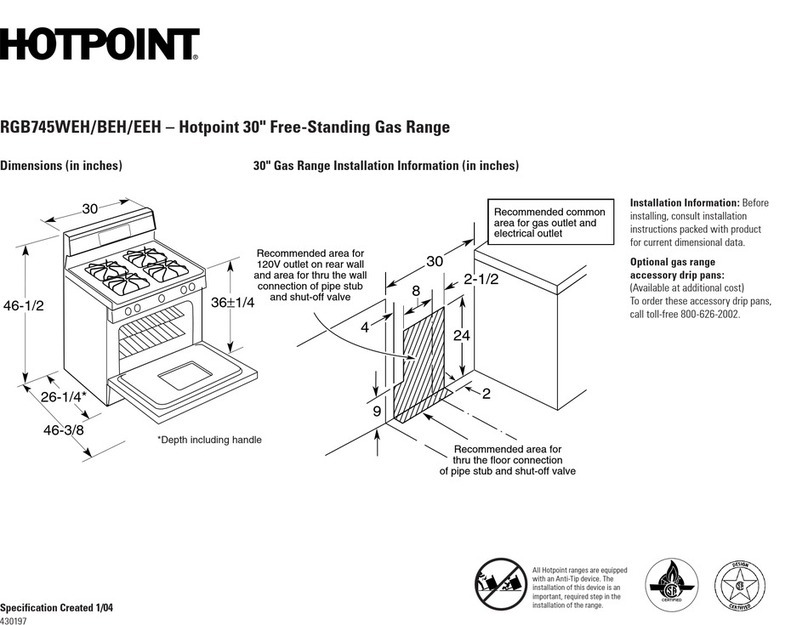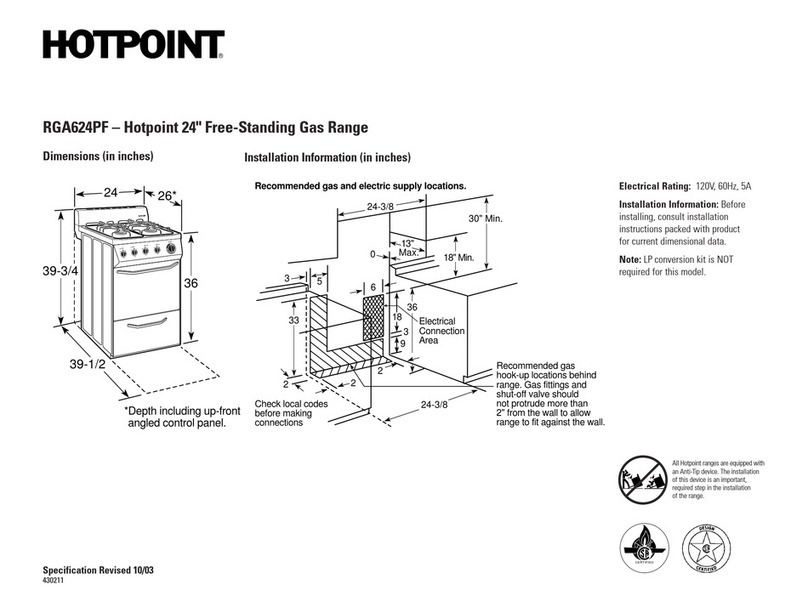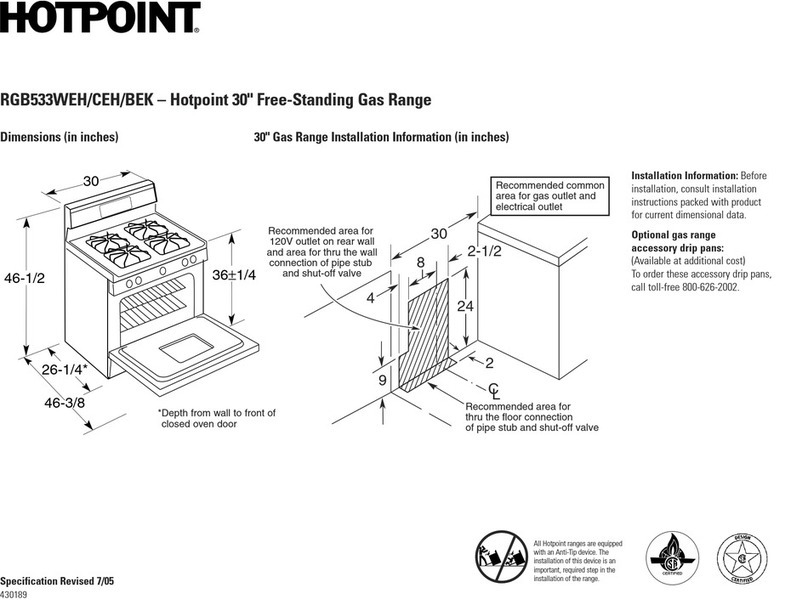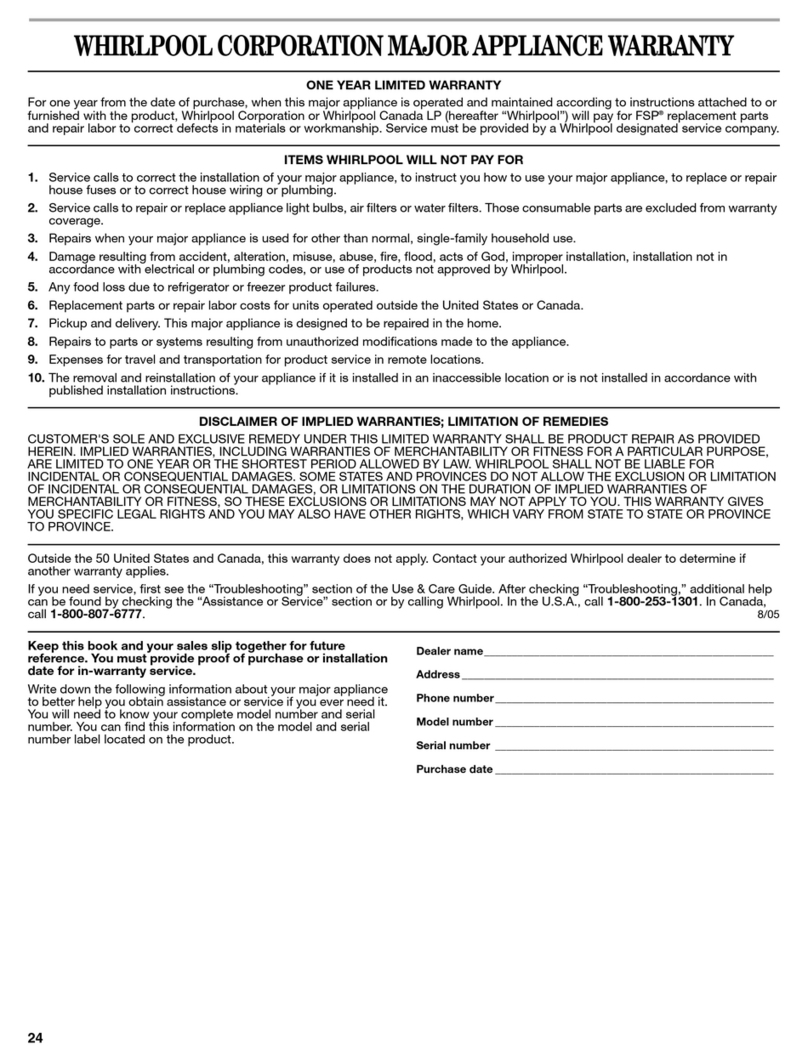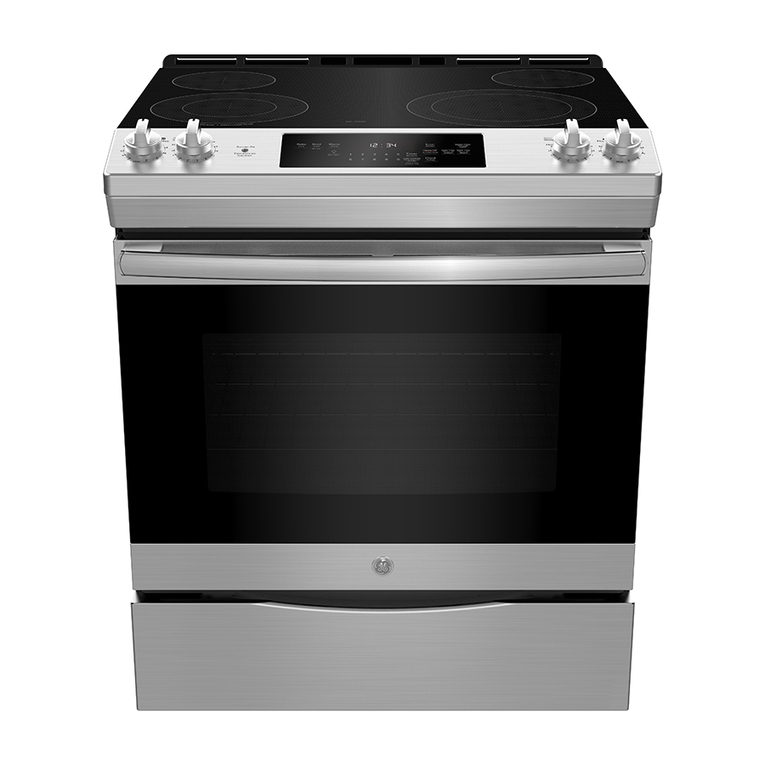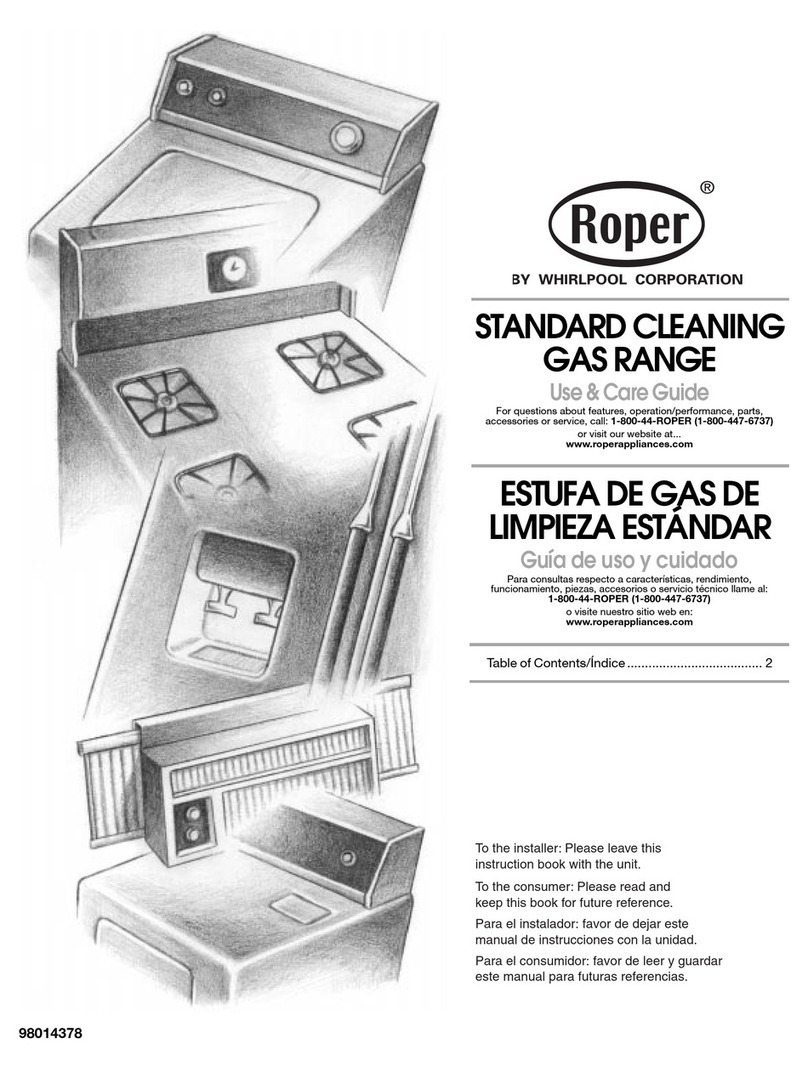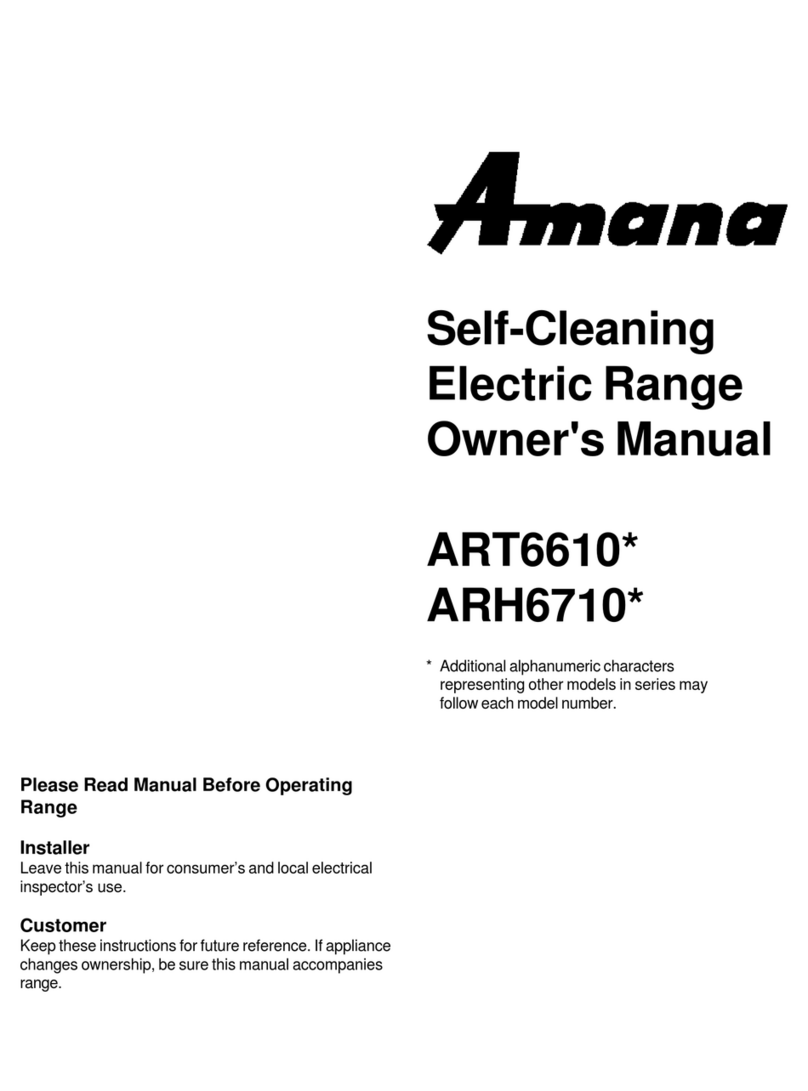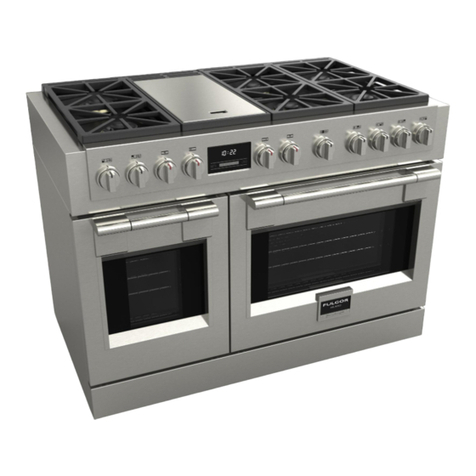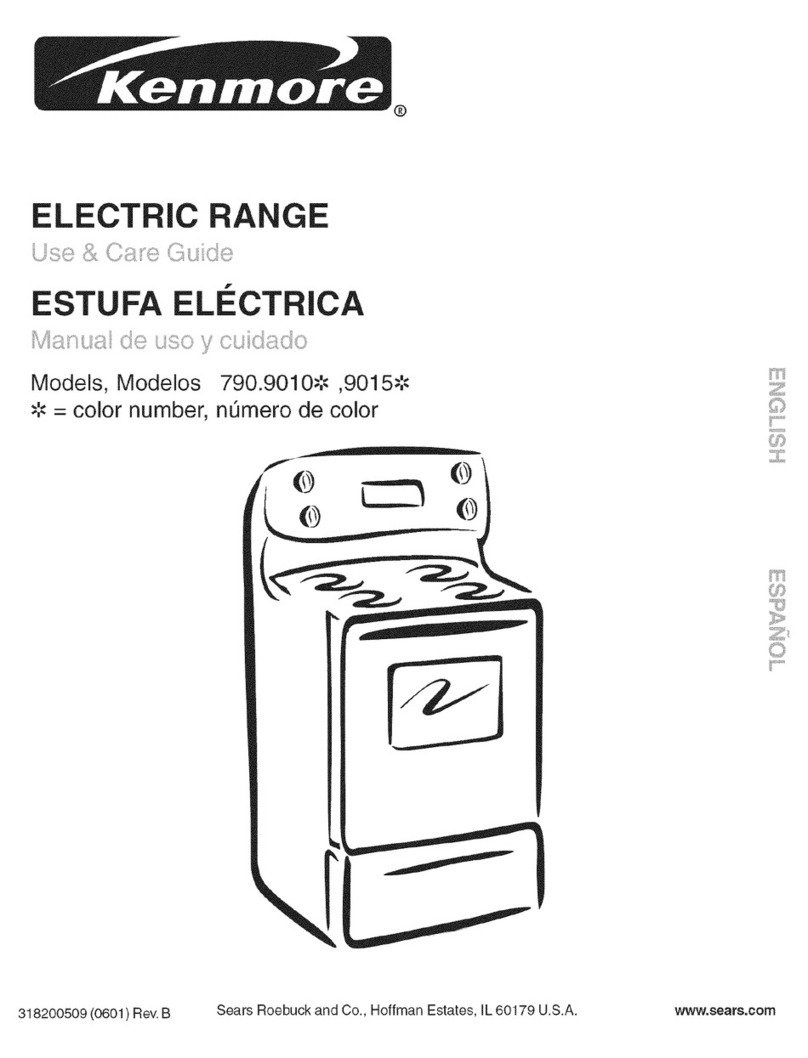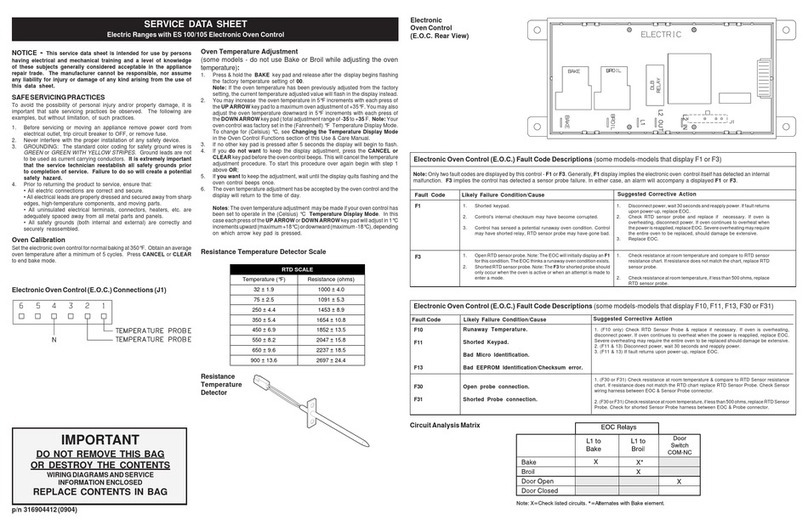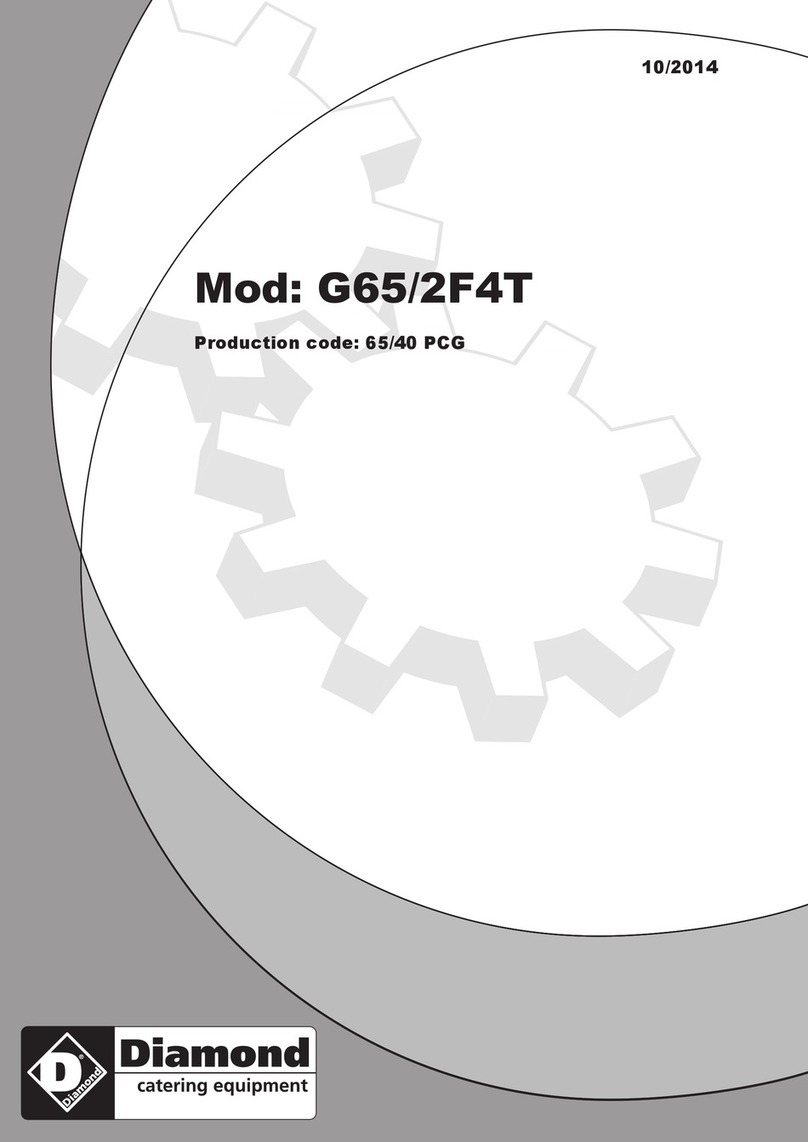$Foryoursafety9never use
yourapplianceforW’arlllingor
heatingtileroom.
aDonot usewater ongrease
fires. Neverpick up aflaming
pan.TLIi~offburner,then
sn~otherflamingpan by covering
pancompletelywithwell-fitting
lid,cookiesheetor tlattray.
Flaming greaseoutsideapan can
beput outby coveringwith
bakingsodaor,if available,a
muhi-purposedry chemicalor
foam-typefireextinguisher.
s~~ ~~~~~~~~fl~~~~~~~
materials in an oven,arange
storage draweror near
2Cooktop.
*Donotstoreor use
Co-mbustiblematerials5gasoline
or otherflammablevaporsand
Mqwidsin tilevicinityofthisor
anyotherappliance.
~Donotletcookinggrease or
other flammable materials
accumulatein or near
therange.
QV?hen Cooking porli9 follow
thedirectionsexactlyandalways
cookthe lneatto an internal
temperatureof at least 170°F.
Thisassu]esthat, in theremote
possibilitytha[tricl]in~~naybe
~]resentin the n~ea[,it wi[lbe
i(illedaIId[herncatwill be safe
to eat.
,/,
,,
snlokinganclgreasyspillovers
thatmaycatchon fire.
oAdjust top bur”nerflame Sixc
so it doesnot extend beyond the
edgeof the cooliware.Excessive
fla~neishazardous.
ouse Oniydry pot llolders—
moistor damppotho]derson hot
surfaces~nayresultinburnsfroin
steam.Do not letpotholders
comenearopenflameswhen
liftingcookware.Do not usea
towelor otherbulkyclothin
placeof apot holder.
*To minimize tile possibility
of burns~ignitionof flammable
materials,and spillage,turn
cookwarehandlestowardthe
sideor backof therangewithout
extendingover adjacentburners.
~Alwaysturn surfaceburner
to OFFbeforeremoving
Cool{ware.
ecarefully watchfoodsbeing
friedat ahighflanlesetting.
oNeverbloclithevents(air
openings)ofthe range.They
providethe air inletand outlet
that are necessaryfor the range
to operateproperlywith correct
combustion,Air openingsare
locatedat the rear of the cooktop,
at the top and bottomof the oven
dOOr,
:111~~t [hebottonlOfthe
@
“--
~Foodsforfrying Shoulflbeas “:,$“:
(Iryas possible.Frostonfrozen
foodsor ~moistureon freshfoods
cancausehotfat tobubbleup
andoversidesof pan.
ouse l&astpossibleamount of
fat for effectiveshallowor
deep-fatfrying.Fillingthe pan
toofullof fat can causespil]overs
whenfood is added.
@If aCombinationof oils or fah
will be used in frying?stir
togetherbeforeheatingor asfats
meltslowly.
~Alwaysheat fat slowly?and
watchas it heats.
QUse adeepfat thermometer
Wllelleverpossibleto prevent
overheatingfat beyondthe
smokingpoint.
~Useproper pan siz~Avoid
pansthat areunstableor easily
tipped.Selectcookwarehaving
flatbottomslargeenoughto
coverburnergrates.Toavoid
spillovers,makesurecookware
is largeenoughto containthe
foodproperly.Thiswillboth
savecleaningtime and prevent
hazardousaccumulationsof
food,sinceheavyspatteringor
spilloverslefton range can
ignite.Use panswith handles
that canbe easilygraspedand
remaincool.
.-.,.-... ..... . ..—-—-----------..—.-.-..--.——-
—— —-—..............-———— —... -——
